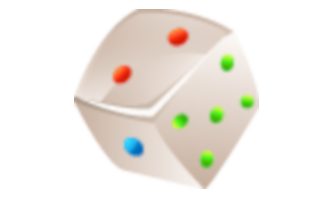Cell Reproduction
Science, Grade 6
Cell Reproduction
Study Guide

Cell Reproduction
Flash Cards

Cell Reproduction
Quiz

Cell Reproduction
Worksheets

Cell Reproduction
Games

Study Guide Cell Reproduction Science, Grade 6
❮
1
/
5
❯
CELL REPRODUCTION Cell Division The process where one cell forms two identical daughter cells is called cell division. Stages of Cell Growth The cell cycle is the sequence of stages of growth and division that a cell undergoes. There are three stages of the cell cycle: interphase, mitosis, and cytokinesis. Interphase is the first stage of the cell cycle. • The cell matures, copies (replicates) its DNA, and prepares to divide. • DNA stands for DeoxyriboNucleic Acid. • Replication is a process when the cell makes a copy of its DNA in the nucleus. The second stage of the cell cycle is called mitosis. • During this stage the cell distributes all of the organelles and the DNA to each identical daughter cell. • There are four phases during mitosis. They are: Prophase, Metaphase, Anaphase, and Telophase. Components of DNA © Copyright NewPath Learning. All Rights Reserved. Permission is granted for the purchaser to print copies for non-commercial educational purposes only. Visit us at www.NewPathLearning.com.
To understand the phases of mitosis, you have to know the components of the DNA that is replicated in the process of mitosis. At the end of mitosis, one cell has become two identical cells, each with the same DNA. The stages of mitosis define the process by which the chromatin, the chromatic, the centromere, and the chromosome interrelate. The chromatin is the genetic material that has the instructions for how the cell is to be run. It is the actual DNA. The chromatid is the one half or one rod of the condensed chromatin. The chromosome is the two daughter strands of a replicated chromatin that are condensed into a rod shape and connected by a centromere. The centromere is the point on the chromosome where the two chromatids are held together. So in other words the chromatin makes up the chromatids, which make up the chromosome. © Copyright NewPath Learning. All Rights Reserved. Permission is granted for the purchaser to print copies for non-commercial educational purposes only. Visit us at www.NewPathLearning.com.
Prophase: The chromatin condenses and spindle fibers form at each side of the cell. The nuclear membrane breaks apart. Metaphase: The chromosomes line up along the center of the cell and the spindle fibers attach to each chromosome at the centromere. Anaphase: The spindle fiber splits the centromere and the chromatids move to opposite sides of the cell. Telophase: The chromosomes loosen on each side and the nuclear membrane begins to form around the chromatin. Cytokinesis The third stage of the cell cycle is cytokinesis. During this stage the cell membrane pinches in at the middle of the cell until they become two separate daughter cells. © Copyright NewPath Learning. All Rights Reserved. Permission is granted for the purchaser to print copies for non-commercial educational purposes only. Visit us at www.NewPathLearning.com.
Sexual Reproduction and Meiosis The majority of the species on Earth reproduce sexually. The process that reduces the total number of chromosomes to half and forms the sex cells is called meiosis. The only cells that are created by meiosis are the sex cells. Sex cells are cells that make up the sperm (male) and the egg (female). There are two separate cell divisions during meiosis: meiosis 1 and meiosis 2. There are four phases in each cell division that have the same names as those from mitosis. The end result of meiosis is four sex cells that have half of the genetic material of a mitotically produced cell. DNA Structure and Replication The cell makes an identical copy of its DNA before cell division called DNA replication. In 1953, James Watson and Francis Crick discovered the structure of DNA. The Structure of DNA DNA’s structure is similar to that of a ladder that is twisted around and around. This shape has given it the nickname of the “Double Helix.” © Copyright NewPath Learning. All Rights Reserved. Permission is granted for the purchaser to print copies for non-commercial educational purposes only. Visit us at www.NewPathLearning.com.
The two sides of the double helix are made from a combination of molecules, one being a sugar and the other being a phosphate. They are called a nitrogen base when they are together. Nitrogen Bases in DNA There are four different nitrogen bases: Adenine, Thymine, Guanine, and Cytosine. The nitrogen bases are referred to as A (Adenine), T (Thymine), G (Guanine), and C (Cytosine) when the topic is DNA. A major point when talking about the nitrogen bases of DNA is that there is a specific pairing of the molecules. For example, A (Adenine) is always paired with T (Thymine) and G (Guanine) is always paired with C (Cytosine). © Copyright NewPath Learning. All Rights Reserved. Permission is granted for the purchaser to print copies for non-commercial educational purposes only. Visit us at www.NewPathLearning.com.
